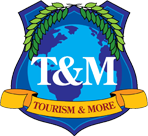Successful Parades
August 2008
Parades may have existed since the beginning of history. Not only are they one of the original tourism attractions, but also they seem to touch something deep in the human soul. Parades are found in every corner of the world and in almost every form. From military parades to political parades, from parades expressing a particular group’s pride, to parades celebrating a national or religious holiday parades seem to be part of the human and tourism experience. Although many parades are stand-alone occurrences, many conventions, pageants, and festivals have parades as part of their event. Throughout history the military has used parades to show off its might, religion has used processionals as a means of reinforcing faith and citizens have used parades as a means of making local or national holidays. To help you plan and market your parades, Tourism Tidbits this month focuses on the issues of parades.
- Parades are more than merely people marching down a street. Successful parades are a total experience, from the training that your police officers and security people provide to the ease of parking. Make sure that people have easy access to rest areas, shaded locations and rest room access.
- Plan your parade well in advance. Parades are fun to watch; they can also create all sorts of problems. Well before the parade make a list of not only what can go wrong but also who may be inconvenienced by the parade. Long before the parade is to take place take the time to touch base with as many of these inconvenienced groups as possible.
- Remember that from a tourism perspective a parade is more than a group of people walking/riding down a street. Parades are a multi-faceted experience. Often the success of a parade is determined not only by what happens during the parade but also by the activities that surround it. While the parade is the centerpiece of the event, secondary events taking place in close proximity to the parade turn a mere parade into a major tourism experience. Think about what other fun filled activities can add to the parade and make these other activities part of your parade experience.
- Parades need to be orchestrated. Make sure that each of the parade’s components understands their specific role in the event. For example, it is important that your bands, color-guards, marching bands, float designers not only understand their role in the parade but also the other participants roles. The closer the coordination between the various components of the parade’s staff the more successful the parade will be.
- Make sure that everyone is happy with the date and be sensitive to religious and cultural issues. For example if you are holding a parade with a large number of loud bands consider the route and who may be upset by the extra noise. In a like manner consider the weather (most parades are out of doors) and how you will recover should there be a “weather challenge.”
- Make sure you know what permits are needed and by when you will need these permits. Many cities now have this information on line. Also meet with your local police force and find out what their requirements may be not only along the parade route but also on the adjoining streets. Make sure to provide your government agencies with a full list of those who are participating or sponsoring the parade.
- Go over the parade route carefully. Parade tragedies occur where they are least expected. Think through the topography of the parade route and which problems this topography may present for the types of vehicles in the parade. Trail runs are well worth the cost and often demonstrate hidden problems that had not been previously considered.
- Determine what services you plan on providing. If the parade is a major event will there be a need for bathroom services, food vendors, musicians, shaded areas or platforms for guest speakers? If you are having a guest speaker at the parade, research the acoustics and remember that the acoustics are different when a plaza is full of people from when it is empty.
- If you are giving out awards, incorporate the awards into the parade experience. Many parades provide recognition for the best float, custom, or musical band. Incorporate this talent-show aspect into the actual parade experience. People love to know who won an award, and the positive re-enforcement provides motivation for better participation in future years.
- Provide time frames. It is helpful to people to know when and where a parade will start and when it is over. Once the parade is over think through how you can encourage viewers to stay in the parade area. Are your stores open? Are there other events occurring? Make sure that parade viewers know about other co-parade activities taking place close to the parade site.
- Work with store owners and others along the parade route. The good thing about a parade is that it usually increases the number of pedestrians on the parade route’s streets. The bad thing is that it may divert traffic away from these same streets and produce undesired traffic congestion. Meet with store owners both along the parade routes and the diversion routes to see how they use they can use the parade to attract people into their stores but before and after the parade. 1
- Be careful of liability issues. Make sure that you have proper stand-off distances, if your parade route contains a hill insist that all vehicles in the parade have their breaks checked. Go over carefully where people might flee in case of an emergency, and make sure you coordinate all events with your first responders and medical team.



